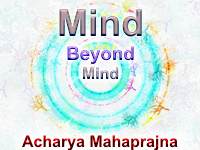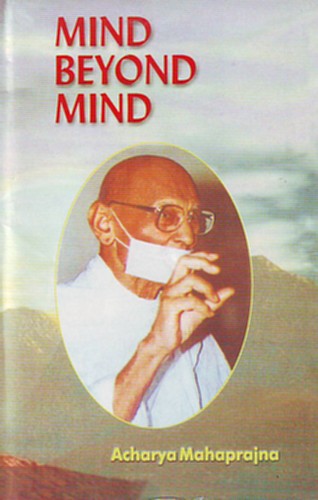
What is the difference between a Cakra and a Manna Sthana (vital point)? Do they exist in the gross body or in the subtle body?
The Vital Points are thick assemblages of knowledge fibres. They are called Cakras when they form complexes or plexuses. There are seven hundred and odd vital points in the human body. A lot of investigational work is being done on them in Japan. The Chinese were the first to develop the system of the treatment of diseases known as the system of acupuncture. This system is now being developed in Japan also. Russian and American medical scientists are also working in this field of investigation. Vital points in the body connected with certain diseases are pierced with an electrically charged needle to cure the disease.
There are Cakras in the subtle body also but they cannot be located there in a gross form. They exist in a gross form in the gross body only. They are like the images reflected in a mirror. The physical structures of animals are determined by the potential they possess. For example an animal having the potential of visual perception will develop the visual apparatus, i.e. the eye in its body in the course of its growth. The potential for visual perception does not exist in the gross body or the eye. It exists in the subtle body known as the Karma sarira. The physical retina is only a means of perception. The potential does not exist in the physical organ but in the subtle body. This applies to the Cakras also. The potential, which activates a Cakra exists in the subtle body. The Cakra itself as an organ, however, exists in the gross body. That is why it is difficult to locate a Cakra anatomically. The potential belongs to the subtle body whereas the organ through which it manifests itself belongs to the gross body.
Why has a great stress been laid on the navel in Yoga?
According to Yoga, the navel is the seat of fire. It is also said to be the seat of the sun. It generates heat. The entire heat of the body is generated in the navel. It produces enormous quantities of heat. Some times practitioners, who do not possess the required know how, begin to concentrate on the navel and inadvertently produce so much heat in the body that it becomes impossible to control it. This heat produces uncontrollable carnal desires. Scientists are conducting a lot of investigation on the functions of the navel. The investigators include psychologists, physiologists, and experts in Yoga. They have all come to the common conclusion that the navel is the generator of heat and electricity which are responsible for all the activities of the body. When this centre ceases to function properly, it produces sloth or torpor.
You have said that we should not allow the mind to be defiled. The mind controls the sense organs. Should we allow the defilements to be born and continue or should we try to stop them?
If the defilements are not born of your own volition, you should not try to stop them. Some times the mind is deliberately defiled by our own actions and at other times it is a natural process also. You should simply watch it. If it is a natural process and - is like an uninvited guest it will disappear in the natural course. What you need to do is not to develop any kind of attachment to it. You should treat it as an alien or a stranger. This attitude of detachment will render the defilement ineffective and it will not do any harm to you.
You have said that the division of the functions of the sense organs is artificial. How is it so?
Jayacarya has explained this point. The flow of consciousness cannot be partitioned. It is a continuous, undivided, and composite flow. The division of Consciousness in accordance with the individual sense organs is necessitated by practical considerations. It is not real. The sense organs, taken individually as well as collectively, reveal only parts of reality, whereas consciousness free from its dependence on the sense organs reveals the whole of reality in a single flash. Take, for example, a platform thickly covered with dust. If by chance one of its corners became cleared of the dust, we would feel that there is something under the dust. Another corner of the same platform may be cleared after some time. We would feel that there is another thing under the dust. If all the four corners of the platform have been cleared, we will feel that there are four things under the dust. As a matter of fact the platform is only a single thing, but we feel as if there are four separate things under the dust. The sense organs reveal only parts of reality and not the whole of it. We confuse the parts with the whole of reality. Thus the sense organs give us a false picture of reality and create diversity in the midst of the unity of reality. Consciousness is a unity, a single entity as against the diversity of the sense organs. That is why I have said that the division of consciousness on the basis of the sense organs in an artificial division necessitated by practical considerations.
What is the difference between Vrata and Mahavrata? Which of our interests lead us towards Vrata and which of them towards Mahavrata? How are we to draw a dividing line between our interests?
We define the areas of Vrata and Mahavrata in the light of practical considerations. The delimitation of Mahavrata and Vrata is based on our imagination of the ideal we want to achieve. Both are ideals or plans or disciplines conceived by us. Bhagavana Mahavira said: "The religious discipline of some of the householders is better than that of some of the monks and the conduct of a disciplined monk is better than that of the householder." Vrata and Mahavrata have got to be defined with reference to the householders and the monks. The consciousness of a monk is a self-centred consciousness. That is the area of the interest of the monk. A practitioner of Mahavrata is one who renounces false attitudes by means of three Yogas and three Karanas (joining the body, mind and speech to the self and do things, get them done and approve of them in the light of this consideration) is a Mahavrati (one who has adopted the Mahavrata). The monk is such a person. One who makes an exception in these three Yogas and Karanas is a householder. A householder need not observe all the essential conditions of Mahavrata. There are various categories of the Sravakas or householders. A Sravaka has to renounce eleven things (Pratimas). The householder who renounces all the eleven things is called a Pratima Dhari Sravaka. He is almost at par with a monk, although technically he is not a monk He too renounces the home, takes pure diet and observes a number of disciplines. But he is not a monk. He is not a monk for the simple reason that he has not yet cut the string of attachments and does sometimes approve of things, which a monk would not. That is why he continues to be a householder. That is the difference between the two. Mahavrata operates in three fields, the fields of the activities of the body, mind, and speech and refers to the doing, getting done and approving things. Vrata belongs to a lower category.
 Acharya Mahaprajna
Acharya Mahaprajna

